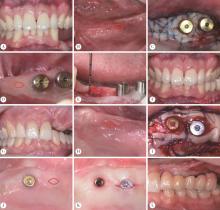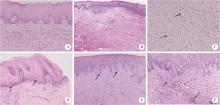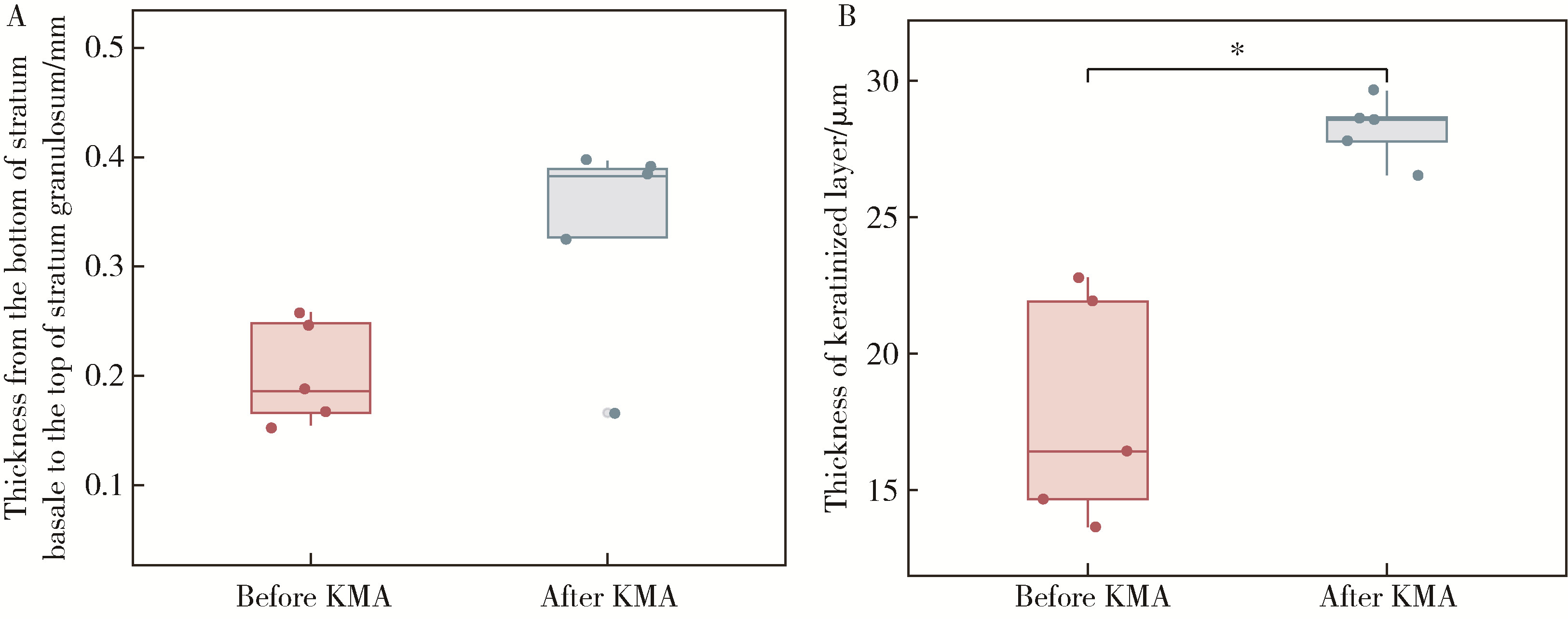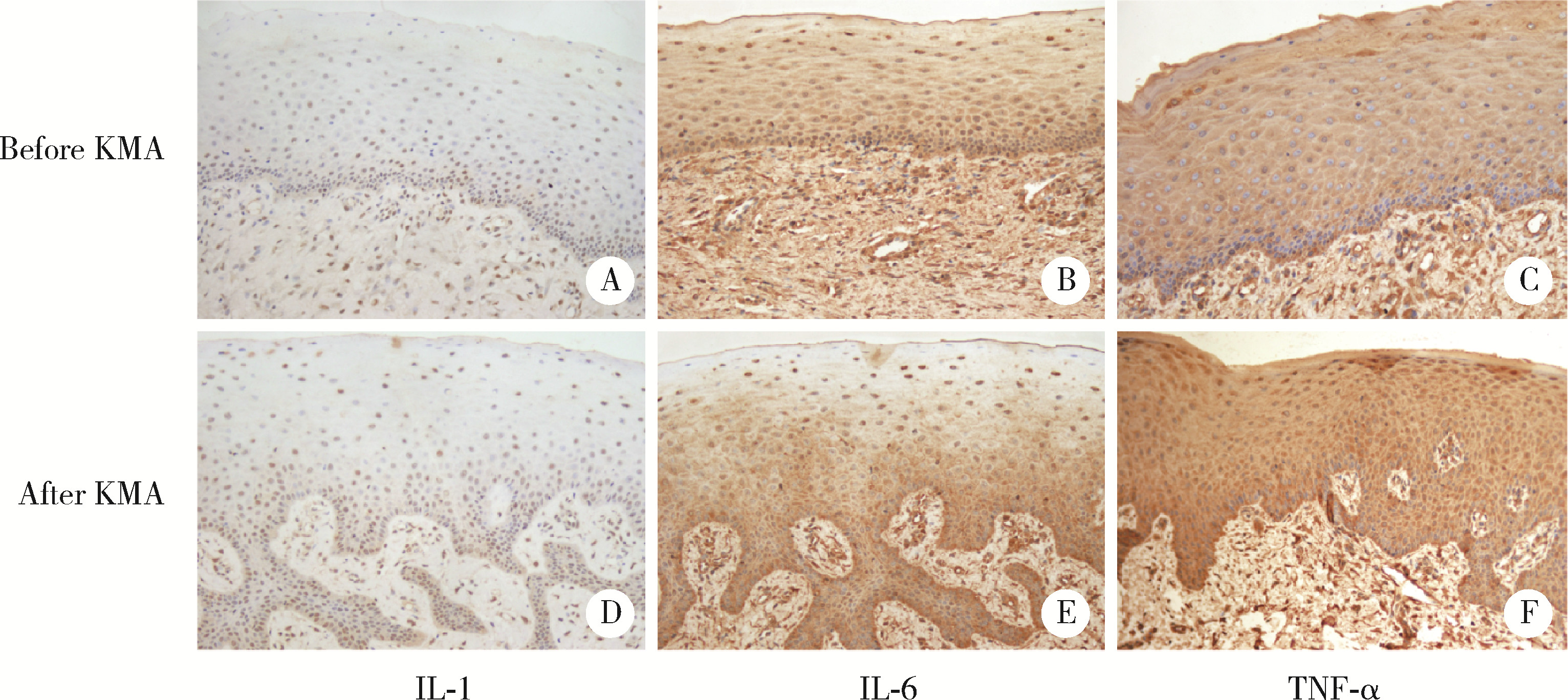Journal of Peking University (Health Sciences) ›› 2024, Vol. 56 ›› Issue (1): 25-31. doi: 10.19723/j.issn.1671-167X.2024.01.005
Previous Articles Next Articles
Histopathological characteristics of peri-implant soft tissue in reconstructed jaws with vascularized bone flaps
Jiayun DONG,Xuefen LI,Ruifang LU*( ),Wenjie HU,Huanxin MENG
),Wenjie HU,Huanxin MENG
- Department of Periodontology, Peking University School and Hospital of Stomatology & National Center for Stomatology & National Clinical Research Center for Oral Diseases & National Engineering Research Center of Oral Biomaterials and Digi-tal Medical Devices, Beijing 100081, China
CLC Number:
- R781.4
| 1 |
Goker F , Baj A , Bolzoni AR , et al. Dental implant-based oral rehabilitation in patients reconstructed with free fibula flaps: Clinical study with a follow-up 3 to 6 years[J]. Clin Implant Dent Relat Res, 2020, 22 (4): 514- 522.
doi: 10.1111/cid.12928 |
| 2 |
Pellegrino G , Tarsitano A , Ferri A , et al. Long-term results of osseointegrated implant-based dental rehabilitation in oncology patients reconstructed with a fibula free flap[J]. Clin Implant Dent Relat Res, 2018, 20 (5): 852- 859.
doi: 10.1111/cid.12658 |
| 3 |
Sonmez TT , Prescher A , Salama A , et al. Comparative clinico-anatomical study of ilium and fibula as two commonly used bony donor sites for maxillofacial reconstruction[J]. Br J Oral Maxillofac Surg, 2013, 51 (8): 736- 741.
doi: 10.1016/j.bjoms.2013.07.010 |
| 4 | 林野, 邱立新, 胡秀莲, 等. 硬腭游离黏膜移植在种植体周软组织结构重建中的应用[J]. 北京大学学报(医学版), 2007, 39 (1): 21- 25. |
| 5 | Shan X , Han D , Ge Y , et al. Clinical outcomes of keratinized mucosa augmentation in jaws reconstructed with fibula or iliac bone flaps[J]. Int J Oral Maxillofac Surg, 2021, 51 (7): 949- 956. |
| 6 |
Han J , Ulevitch RJ . Limiting inflammatory responses during activation of innate immunity[J]. Nat Immunol, 2005, 6 (12): 1198- 1205.
doi: 10.1038/ni1274 |
| 7 |
Vignoletti F , Nunez J , de Sanctis F , et al. Healing of a xenoge-neic collagen matrix for keratinized tissue augmentation[J]. Clin Oral Implants Res, 2015, 26 (5): 545- 552.
doi: 10.1111/clr.12441 |
| 8 |
Wu T , Xiong X , Zhang W , et al. Morphogenesis of rete ridges in human oral mucosa: A pioneering morphological and immunohistochemical study[J]. Cells Tissues Organs, 2013, 197 (3): 239- 248.
doi: 10.1159/000342926 |
| 9 |
Sa GL , Liu ZK , Ren JG , et al. Keratinocyte growth factor (KGF) induces podosome formation via integrin-Erk1/2 signaling in human immortalized oral epithelial cells[J]. Cell Signal, 2019, 61, 39- 47.
doi: 10.1016/j.cellsig.2019.05.007 |
| 10 |
Sa GL , Xiong XP , Ren JG , et al. KGF enhances oral epithelial adhesion and rete peg elongation via integrins[J]. J Dent Res, 2017, 96 (13): 1546- 1554.
doi: 10.1177/0022034517720360 |
| 11 | Squier C , Brogden KA . Human oral mucosa: Development, structure and function[M]. Chichester: John Wiley & Sons, 2011: 55- 57. |
| 12 |
Lawlor K , Kaur P . Dermal contributions to human interfollicular epidermal architecture and self-renewal[J]. Int J Mol Sci, 2015, 16 (12): 28098- 28107.
doi: 10.3390/ijms161226078 |
| 13 |
de Luca M , Albanese E , Megna M , et al. Evidence that human oral epithelium reconstituted in vitro and transplanted onto patients with defects in the oral mucosa retains properties of the original donor site[J]. Transplantation, 1990, 50 (3): 454- 459.
doi: 10.1097/00007890-199009000-00019 |
| 14 | Henry J , Toulza E , Hsu CY , et al. Update on the epidermal differentiation complex[J]. Front Biosci (Landmark Ed), 2012, 17 (4): 1517- 1532. |
| 15 |
Nemes Z , Steinert PM . Bricks and mortar of the epidermal barrier[J]. Exp Mol Med, 1999, 31 (1): 5- 19.
doi: 10.1038/emm.1999.2 |
| 16 |
孙凯, 刘丽骏, 张倩倩, 等. Wistar大鼠自然衰老过程中口腔颊黏膜上皮厚度的改变[J]. 中华老年口腔医学杂志, 2018, 16 (6): 333- 335.
doi: 10.3969/j.issn.1672-2973.2018.06.004 |
| 17 | Sabine E , Groeger JM . Epithelial barrier and oral bacterial infection[J]. Periodontology 2000, 2015, 69 (1): 46- 67. |
| 18 | Jandinski JJ . Osteoclast activating factor is now interleukin-1 beta: Historical perspective and biological implications[J]. J Oral Pathol, 1988, 17 (4): 145- 152. |
| 19 | Kondo S , Sauder DN . Tumor necrosis factor (TNF) receptor type 1 (p55) is a main mediator for TNF-alpha-induced skin inflammation[J]. Eur J Immunol, 1997, 27 (7): 1713- 1718. |
| [1] | Ying ZHOU,Ning ZHAO,Hongyuan HUANG,Qingxiang LI,Chuanbin GUO,Yuxing GUO. Application of double-layer soft tissue suture closure technique in the surgical treatment of patients with mandible medication-related osteonecrosis of the jaw of early and medium stages [J]. Journal of Peking University (Health Sciences), 2024, 56(1): 51-56. |
| [2] | Ran ZHAO,Yan-qing LIU,Hua TIAN. Cumulative sum control chart analysis of soft tissue balance in total knee replacement assisted by electronic pressure sensor [J]. Journal of Peking University (Health Sciences), 2023, 55(4): 658-664. |
| [3] | Zhong ZHANG,Huan-xin MENG,Jie HAN,Li ZHANG,Dong SHI. Effect of vertical soft tissue thickness on clinical manifestation of peri-implant tissue in patients with periodontitis [J]. Journal of Peking University (Health Sciences), 2020, 52(2): 332-338. |
| [4] | Tian-wen ZHANG,Xiao-xia WANG,Zi-li LI,Biao YI,Cheng LIANG,Xing WANG. Establishment of three-dimensional measurement methods of nasolabial soft tissue for patients with maxillary protrusion [J]. Journal of Peking University(Health Sciences), 2019, 51(5): 944-948. |
| [5] | ZHAO Li-ping, ZHAN Ya-lin, HU Wen-jie, WANG Hao-jie, WEI Yi-ping, ZHEN Min, Xu Tao, LIU Yun-song. Dental implantation and soft tissue augmentation after ridge preservation in a molar site: a case report [J]. Journal of Peking University(Health Sciences), 2016, 48(6): 1090-1094. |
|
||







